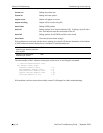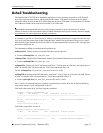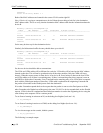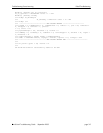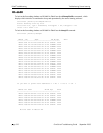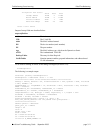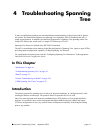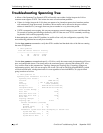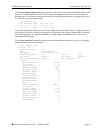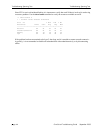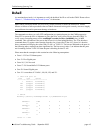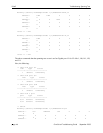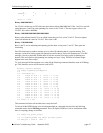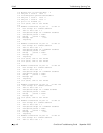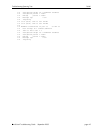
Troubleshooting Spanning Tree Troubleshooting Spanning Tree
page 4-2 OmniSwitch Troubleshooting Guide September 2005
Troubleshooting Spanning Tree
A failure of the Spanning Tree Protocol (STP) will usually cause either a bridge loop on the LAN or
constant reconvergence of STP. This in turn can cause several resultant problems.
• If there is a bridge loop on the LAN, there can appear to be a broadcast storm since broadcast packets
will continuously loop the network. In addition, unicast traffic can be affected as the port a unicast
address is learned off of, can toggle from one port to another in a very short time period.
• If STP is constantly reconverging, this can cause temporary network outages as ports could through the
30 seconds of listening and learning as defined by 802.1D. One can see if STP is constantly reconverg-
ing that the LAN could be perpetually down.
In determining the cause of the STP problem, its useful to first verify the configuration, especially if the
network having problems has recently been installed.
Use the show spantree command to verify that STP is enabled and that both sides of the link are running
the same STP protocol.
-> show spantree
Vlan STP Status Protocol Priority
-----+----------+--------+--------
1 ON 802.1D 32768
10 ON 802.1D 32768
Use the show spantree command and specify a VLAN to verify the correct mode, designated root ID, root
port, and configurable timers. The timers need to be consistent across a physical link running STP. Also
very useful to note in this command are Topology changes and Topology age. If topology changes are
incrementing quickly, the LAN can not agree who is root. This can be caused by dropped BPDUs (which
will be discussed later), a bridge that insists it is root regardless of received BPDUs, or a physical link
going in and out of service.
-> show spantree 10
Spanning Tree Parameters for Vlan 10
Spanning Tree Status : ON,
Protocol : IEEE 802.1D,
mode : 1X1 (1 STP per Vlan),
Priority : 32768 (0x8000),
Bridge ID : 8000-00:d0:95:79:62:8a,
Designated Root : 8000-00:d0:95:79:62:8a,
Cost to Root Bridge : 0,
Root Port : None,
Next Best Root Cost : 0,
Next Best Root Port : None,
Hold Time : 1,
Topology Changes : 0,
Topology age : 0:0:0
Current Parameters (seconds)
Max Age = 20,
Forward Delay = 15,
Hello Time = 2
Parameters system uses when attempting to become root
System Max Age = 20,
System Forward Delay = 15,
System Hello Time = 2



